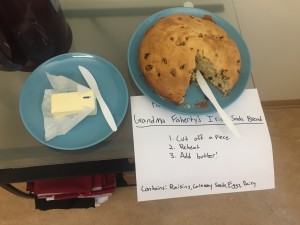Background Information: Justin is a senior at college, and he grew up in San Francisco. His family on his father’s side is from Hong Kong, and they used to run a noodle stall while they still lived there. Now, his father works in real estate, but some family recipes still live on. I interviewed Justin about a ‘secret recipe’ passed down from his grandmother.
Justin: So, um, there’s… So my dad says a lot of like, “secret recipe this, secret recipe that”, but usually he’s making it up, but, one time, during I think, Thanksgiving dinner with like, my extended family on my dad’s side, two of my uncles brought some kind of, um, zha jiang mian (炸酱面), um, that they’d made. And, I thought it was pretty good and I was wondering where they got it, and my dad tells me that… “oh this is actually like a family secret recipe, like for real this time”. Um, and… they actually made it like, buying the ingredients and putting it together, and… whatever else you need to do to make the sauce. And, apparently it’s passed down from my grandma, who used to make it, or… she and, um, the rest of my… the rest of her kids, including my dad I suppose? Used to make it, because they ran a noodle stall in Hong Kong before they moved here. And so they made that, and it’s pretty good. And so when they came to America, and they were looking for work, um, one of the restaurant owners that my dad ended up working for as a waiter, offered my grandma a job? But, she couldn’t take it, because the sauce is really labor intensive, and you—you couldn’t make restaurant quantities of it with just one person, but she wouldn’t teach anyone else how to make it. So, she had to turn down the job.
Thoughts: It is interesting to me how protective Justin’s grandmother was over her family secret recipe. She was unwilling to relinquish ownership of it to the restaurant. This is reminiscent of the discussion we had in class about authorship and folklore. If Justin’s grandma had taught the restaurant her secret recipe, it would then belong to the restaurant and become standardized and institutionalized as a dish of that restaurant. Instead, it remains within Justin’s family, and can have variations and different forms.

